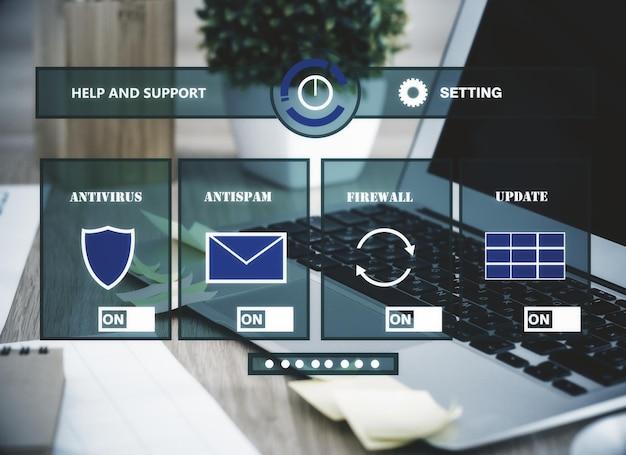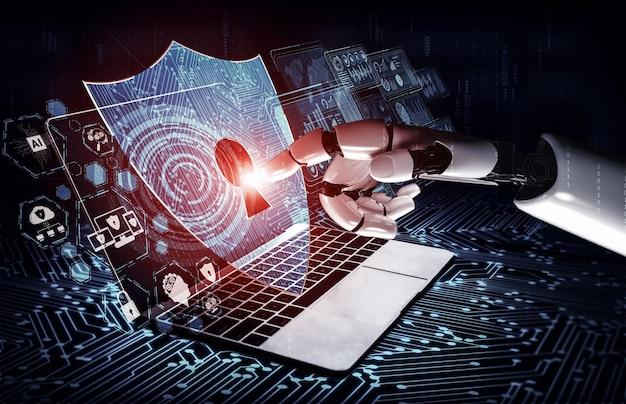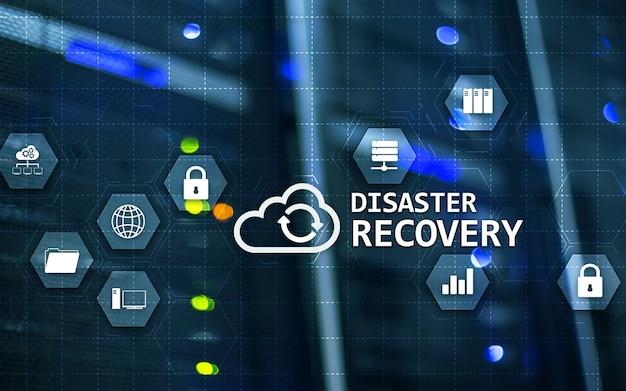Building Cyber Resilience: A Comprehensive Framework for Security in the Digital Age

Audio : Listen to This Blog.
In an era where cyber threats loom large, organizations need more than just robust security measures – they need cyber resilience. Cyber resilience goes beyond traditional cybersecurity, focusing on an organization’s ability to anticipate, withstand, and recover from cyberattacks. In this article, we delve into the core components of a Cyber Resilience Framework, exploring the tools, technologies, and strategies that empower businesses to navigate the complex landscape of cyber threats.
Understanding Cyber Resilience
Cyber resilience is the capability of an organization to continue operating and delivering services during and after a cyberattack. It encompasses a proactive approach to cybersecurity, emphasizing preparedness, response, and recovery. At its core, cyber resilience involves:
Risk Assessment and Management
In the realm of cybersecurity, conducting comprehensive risk assessments is paramount to identify potential vulnerabilities and threats that may compromise the integrity, confidentiality, and availability of sensitive information and systems. Leveraging advanced tools such as vulnerability scanners, penetration testing software, and threat intelligence platforms enables organizations to assess and mitigate risks effectively. By systematically analyzing the security posture of networks, applications, and infrastructure, organizations can proactively identify and address weaknesses before they are exploited by malicious actors.
Continuous Monitoring

Implementing robust monitoring systems is essential to detect anomalies and suspicious activities in real time, thereby enabling timely response and mitigation efforts. Technologies such as Security Information and Event Management (SIEM) solutions, intrusion detection systems (IDS), and endpoint detection and response (EDR) tools play a pivotal role in continuous monitoring by aggregating and correlating security events from diverse sources. Through constant monitoring, organizations can gain visibility into their environment, detect malicious activities, and respond promptly to security incidents, thereby reducing the dwell time of attackers and minimizing potential damages.
Incident Response Planning
Developing detailed incident response plans is critical to effectively managing and mitigating cyberattacks’ impact. This involves defining clear roles and responsibilities for incident responders, establishing communication protocols for notifying stakeholders, coordinating response efforts, and conducting regular tabletop exercises to test the effectiveness of the response plan. By proactively preparing for potential security incidents, organizations can streamline their response efforts, minimize disruption to operations, and mitigate financial and reputational damages associated with cyberattacks.
Key Components of a Cyber Resilience Framework
In the realm of cybersecurity, building robust defenses is paramount to safeguarding sensitive information and systems from malicious actors. Here are some key strategies to fortify your digital fortresses:
Prevention: Building Strong Defenses
In the realm of cybersecurity, building robust defenses is paramount to safeguarding sensitive information and systems from malicious actors. Here are some key strategies to fortify your digital fortresses.
Firewalls and Intrusion Prevention Systems (IPS)

Employing next-generation firewalls that go beyond traditional packet filtering to inspect and act upon application-layer data can significantly enhance your network security. Integrated with Intrusion Prevention Systems, these solutions monitor and control both inbound and outbound traffic, effectively thwarting unauthorized access attempts and mitigating potential threats in real-time.
Endpoint Security
Securing endpoints such as desktops, laptops, and mobile devices is crucial in today’s interconnected landscape. Implementing Endpoint Protection Platforms (EPP) and Endpoint Detection and Response (EDR) solutions provides a multi-layered defense mechanism against sophisticated cyber threats, offering visibility into endpoint activities and the ability to respond promptly to security incidents.
Email Security

Email remains a primary vector for cyberattacks, making robust email security measures essential. Deploying email security gateways with advanced threat protection capabilities can significantly reduce the risk of falling victim to phishing scams, malware-laden attachments, and spam emails. By continuously monitoring and filtering email traffic, organizations can bolster their defenses and minimize the impact of email-borne threats on their operations.
Detection: Early Threat Identification
Early threat identification is crucial to mitigating risks and minimizing potential damages in the ever-evolving cybersecurity landscape. Here are key strategies to enhance your detection capabilities:
SIEM (Security Information and Event Management)
Integrating Security Information and Event Management solutions into your cybersecurity framework allows for centralized monitoring, analysis, and correlation of security events across diverse sources. By aggregating data from logs and security devices, SIEM enables proactive threat detection, rapid incident response, and comprehensive security event management, empowering organizations to identify and thwart security incidents before they escalate.
Threat Intelligence

Staying ahead of cyber threats necessitates leveraging threat intelligence feeds and platforms that provide real-time insights into emerging threats, vulnerabilities, and attack methodologies. By continuously monitoring global threat landscapes and contextualizing threat data within their environments, organizations can bolster their security posture, preempt attacks, and proactively defend against evolving cyber threats.
User Behavior Analytics (UBA)

User Behavior Analytics tools are pivotal in detecting insider threats and abnormal user activity by analyzing behavior patterns and identifying deviations from normal behavior. By establishing baselines and employing machine learning algorithms, UBA solutions can flag suspicious activities, unauthorized access attempts, and potential data breaches, enabling timely intervention and safeguarding critical assets.
Incident Response Orchestration: Streamlining Response Efforts
In cybersecurity, having a well-orchestrated incident response plan is essential to mitigate security breaches and minimize their impact effectively. Here are key strategies to enhance your incident response capabilities:
Incident Response Orchestration
Organizations can automate response workflows, orchestrate security tools, and streamline incident remediation processes by leveraging incident response orchestration platforms. These platforms facilitate swift and coordinated responses to security incidents, ensuring that security teams can efficiently contain threats, investigate breaches, and remediate vulnerabilities without delay.
Forensic Analysis Tools
Forensic analysis tools play a critical role in post-incident investigations by enabling security teams to conduct in-depth forensic analysis, gather digital evidence, and identify the root causes of security breaches. These tools aid in reconstructing incident timelines, understanding attack vectors, and attributing actions to specific threat actors, empowering organizations to strengthen their security posture and prevent future incidents.
Data Backup and Recovery

Establishing robust data backup routines and implementing comprehensive disaster recovery solutions are paramount to ensuring business continuity in the face of cyberattacks. Regularly backing up critical data, storing backups securely, and testing restoration processes are fundamental practices that can help organizations swiftly recover from data loss incidents and resume normal operations with minimal disruption.
Recovery: Restoring Normal Operations
In the aftermath of a cyber incident, swift and effective recovery strategies are essential to restoring normal operations and minimizing disruptions. Here are key approaches to expedite the recovery process:
Business Continuity Planning (BCP)
Business Continuity Planning involves developing and maintaining comprehensive plans that outline procedures to ensure critical business functions can continue during and after a cyber attack. By identifying key resources, establishing communication protocols, and defining recovery strategies, organizations can mitigate the impact of incidents, reduce downtime, and resume operations swiftly to maintain business continuity.
Cyber Insurance

Investing in cyber insurance policies is a proactive measure to mitigate financial losses and liabilities resulting from cyber incidents. These policies provide coverage for expenses related to data breaches, ransomware attacks, and other cyber threats. They offer financial protection and help organizations recover more quickly by offsetting costs associated with incident response, remediation, and legal implications.
Post-Incident Review and Lessons Learned
Conducting thorough post-incident reviews is essential to assessing the effectiveness of response efforts, identifying gaps in security posture, and extracting valuable lessons for future improvements. By analyzing incident response actions, documenting observations, and implementing corrective measures based on lessons learned, organizations can enhance their resilience, refine incident response procedures, and fortify their defenses against future threats.
The Role of Automation and AI

Automation and artificial intelligence (AI) rapidly evolve into critical elements within cyber resilience frameworks, offering sophisticated capabilities for enhancing security postures. Leveraging AI-driven security algorithms, organizations can process and analyze extensive datasets at an unprecedented scale, facilitating the identification of complex patterns and subtle anomalies with higher precision and efficiency than legacy techniques.
By integrating machine learning models, these AI-powered systems can continuously learn from new data inputs, improving their predictive accuracy in detecting potential threats over time. This capability is particularly valuable in preempting zero-day vulnerabilities and sophisticated cyber-espionage activities that evade traditional signature-based detection methods.
On the automation front, the deployment of orchestration tools and automated incident response protocols significantly accelerates the mitigation process. By automating repetitive tasks and streamlining workflows, organizations can ensure a swift and coordinated response to security incidents, minimizing the window of opportunity for attackers to exploit vulnerabilities. Advanced automation also facilitates the implementation of dynamic defense mechanisms, such as automatically adjusting firewall rules or isolating infected network segments, without requiring manual intervention.
Furthermore, the confluence of AI and automation empowers cybersecurity teams to allocate their resources more effectively, focusing on strategic analysis and decision-making rather than being bogged down by routine monitoring tasks. This shift not only enhances the operational efficiency of security operations centers (SOCs) but also elevates the overall cyber resilience of organizations against an increasingly volatile threat landscape.
Conclusion: Embracing Cyber Resilience
In today’s hyper-connected world, cyber resilience is not an option but a necessity. By adopting a comprehensive Cyber Resilience Framework, organizations can bolster their defenses, mitigate risks, and ensure continuity in the face of evolving cyber threats. Remember, cyber resilience is a journey, not a destination. Stay vigilant, stay prepared, and remain resilient.
Take Action: Explore MSys Technologies Cyber Resilience Services

Ready to enhance your organization’s cyber resilience posture? Discover how MSys Technologies can help you build a robust Cyber Resilience Framework tailored to your unique needs. From risk assessments and security audits to incident response planning and training, our expert team is here to empower your organization to thrive in the digital age. Contact us today to learn more!
